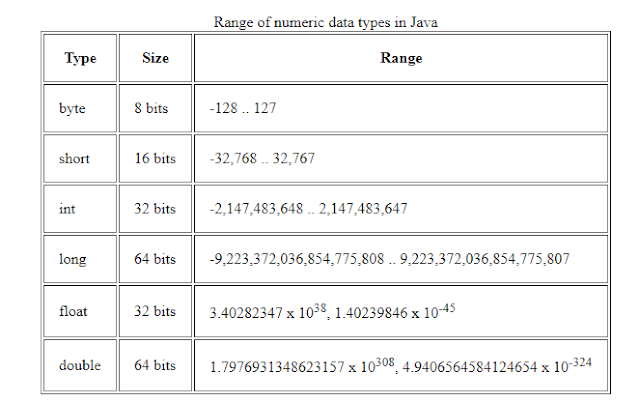Java Datatypes Hackerrank solution in Java
Problem-7:-
Java has 8 primitive data types; char, boolean, byte, short, int, long, float, and double. For this exercise, we'll work with the primitives used to hold integer values (byte, short, int, and long):
- A byte is an 8-bit signed integer.
- A short is a 16-bit signed integer.
- An int is a 32-bit signed integer.
- A long is a 64-bit signed integer.
Given an input integer, you must determine which primitive data types are capable of properly storing that input.
To get you started, a portion of the solution is provided for you in the editor.
Reference: https://docs.oracle.com/javase/tutorial/java/nutsandbolts/datatypes.html
Input Format
The first line contains an integer, , denoting the number of test cases.
Each test case, , is comprised of a single line with an integer, , which can be arbitrarily large or small.
Output Format
For each input variable and appropriate primitive , you must determine if the given primitives are capable of storing it. If yes, then print:
n can be fitted in:
* dataType
If there is more than one appropriate data type, print each one on its own line and order them by size (i.e.: ).
If the number cannot be stored in one of the four aforementioned primitives, print the line:
n can't be fitted anywhere.
Sample Input
5
-150
150000
1500000000
213333333333333333333333333333333333
-100000000000000
Sample Output
-150 can be fitted in:
* short
* int
* long
150000 can be fitted in:
* int
* long
1500000000 can be fitted in:
* int
* long
213333333333333333333333333333333333 can't be fitted anywhere.
-100000000000000 can be fitted in:
* long
Explanation
-150 can be stored in a short, an int, or a long.
2133333333333333333333333333333333333 is very large and is outside of the allowable range of values for the primitive data types discussed in this problem.
Solution:-
Explanation:-
In this program, basically they ask for to print the data type in which the integer value can be put. For Example, a byte can stored the integer value starting from -8 to 7 and other datatype also have there range which is given below:-
pic source:- cs.fit.edu



woww
ReplyDelete